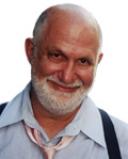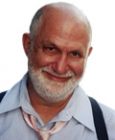Suicide
The Suicide Trap
Celebrity deaths lead to calls for more treatment—but more Tx has no effect
Posted June 8, 2018
The New York Times headline captures the paradox:
“The U.S. suicide rate increased 25 percent from 1999 to 2016, the Centers for Disease Control and Prevention reported on Thursday, even though the rates of psychiatric diagnosis and treatment also greatly increased.”
So, when the chief response to Kate Spade’s suicide was that she feared the stigma of treatment, the claim didn’t ring true. And, two days after her death, her husband Andy Spade reported in an interview in the Times: “She was actively seeking help for depression and anxiety over the last 5 years, seeing a doctor on a regular basis and taking medication for both depression and anxiety.”
Alas, getting Kate Spade into treatment did not solve her suicide.
Which brings us to Anthony Bourdain. Bourdain’s life story is more one of past demons in his life, revealed in his tell-all memoir, “Kitchen Confidential,” in which he described his chaotic earlier life, including mucho drugs:
“Drugs and addiction are two different things,” he reflected to Biography.com in 2016.
“All I can tell you is this: I got off of heroin in the 1980s. . . .”
Bourdain told the New Yorker that he bought his first bag of heroin on Rivington Street in 1980. “When I started getting symptoms of withdrawal, I was proud of myself,” he stated, saying he copped every day as it held a special allure. But that grew thin.
“Getting ripped off, running from the cops,” he recalled. “I’m a vain person. I didn’t like what I saw in the mirror.” Bourdain switched to methadone, but quit cold turkey around 1987 after getting over it. Then he spent several years addicted to cocaine. “I just bottomed out on crack,” he told the New Yorker. It was so bad that sometimes between fixes, he would dig paint chips out of the carpet in his apartment and attempt to smoke them on the off chance that they were pebbles of crack.
“Most people who kick heroin and cocaine have to give up on everything. Maybe because my experiences were so awful in the end, I’ve never been tempted to relapse,” he wrote in his first memoir. “You see me drink myself stupid on my show all the time. And I have a lot of fun doing that. But I’m not sitting at home having a cocktail. Never, ever. I don’t ever drink in my house. . . . When I indulge, I indulge. But I don’t let it bleed over into the rest of my life.”
It was Bourdain’s harm reduction approach to drugs and addiction that drew me to him—that and his enormous appetite for life. As Barack Obama tweeted about his interview with Bourdain in Vietnam:
“Low plastic stool, cheap but delicious noodles, cold Hanoi beer.” This is how I’ll remember Tony. He taught us about food — but more importantly, about its ability to bring us together. To make us a little less afraid of the unknown. We’ll miss him.”
Times columnist Frank Bruni wrote in his memorial column, “The Insatiable and Unknowable Anthony Bourdain”: “Anthony Bourdain devoured the world. That’s not hyperbole. It’s not even metaphor. There was no place that he wasn’t curious to explore, no food that he wasn’t determined to try, no cap on his hunger and no ceiling, or so it always seemed, on his joy.”
And, then, alas:
“But his death, coming just days after the suicide of the beloved designer Kate Spade, is at least as noteworthy for another reason: how powerfully it speaks to the discrepancy between what we see of people on the outside and what they’re experiencing on the inside; between their public faces and their private realities; between their visible swagger and invisible pain. Parts unknown: That was true of Bourdain. That was true of Spade. That’s true of every one of us.”
Bourdain too suffered from long-term depression, for which he famously tried therapy in Argentina. His mother said he was in a deep dark mood for several days before his death.
I believe that we can get to the bottom of people’s depression. But in Bourdain’s case, people expect to find the answer in his rejection of a lifelong label of “addict” (see the comments on my “Bourdain report card” blogpost*). This reductive trap will get us no closer to the solution of our suicide splurge than the “treatment-solves-all” one.
A new study by the CDC+ found that fewer than half of suicides had diagnosable mental illnesses. Instead:
Those without a known mental health condition suffered more from relationship problems and other life stressors such as criminal/legal matters, eviction/loss of home, and recent or impending crises.
Similarly, persons with mental health conditions also often experienced other circumstances such as relationship problems and job/financial or physical health problems that contributed to their suicide.
All showing just how complex and steeped in life the suicide equation actually is.
P.S. Failure to communicate. Kathy reacted to my plea for nonreductive thinking by proposing:
My comment about possible root of the cause
I have been saddened by the news of Bourdain's passing. In reading about his
private comments, life and work one thing struck me, as a possibility of his
primary diagnosis - ADHD. I'm not a medical professional. Is there anybody
who can add to this discussion? His resentment of routine and stability of
his childhood, addictive tendencies, complicated private life, thrill seeking
behaviour, etc.
Kathy — I don’t think you’ll enjoy reading me any more than Heather.
* Heather’s response, sent to my personal email, is typical:
Dr Peele, it appears your presumption of Anthony Bourdain was incorrect . He may not have been an “automaton nut” but he clearly did not have a strong program of recovery . Your egomaniacal article was incorrect - he had a good life , but he certainly did not know how to keep it . Your report card is dangerous to many people in recovery .
Heather Farrell
+ https://www.cdc.gov/mmwr/volumes/67/wr/mm6722a1.htm?s_cid=mm6722a1_w




